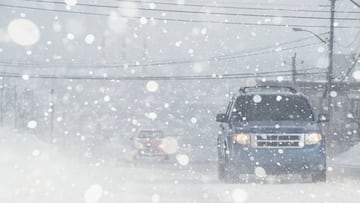What is the Farmers’ Almanac and how does it predict the weather?
The Farmers’ Almanac just released its US Winter 2022 weather predictions, so we take a look into what it is and how it works.

The Farmer’s Almanac has been predicting the weather in the US for over two hundred years, and their latest edition says a very cold winter will follow this unusually hot summer. We explore what this publication is, how it has worked for so long and how cold we will supposedly be in a few months.
What is the Farmers’ Almanac?
A continuous publication since 1818 out of Lewiston, Maine, the Farmers’ Almanac is an annual periodical almanac that provides weather predictions both in the short and long terms as well as calendars and pieces focused on the moon and natural life. It has had seven editors in its two hundred years of existence. David Young, a poet and astronomer, as its founder and the man in charge for over three decades. It was taken over by Ray Geiger in 1933, whose company, Geiger, is the one still publishing it today. In 1997 the website farmersalmanac.com was created as an online edition of the publication, which also has profiles on Facebook (with over 1.2 million followers) and many other platforms.

This year’s edition will be published on 25 August, and can be bought almost everywhere, with a retail price of $7.99 in Amazon. It has a 184 page count and is described as “Just the right mix of weather, wit, fact, fascination, and fun!”.
How does the Farmers’ Almanac get to predict the weather?
A formula. As easy and complex as that. It is devised by their weather prognosticator, who is known by the alias Caleb Weatherbee, and it is said to take into consideration “sunspot activity, tidal action of the Moon, the position of the planets, and a variety of other factors” to make their predictions. There’s not much more information about it, as the editors of the Farmers’ Almanac “prefer to keep both Caleb’s true identity and the formula a closely guarded brand secret”.
What weather has it predicted for next year?
A cold winter is coming, or so the Almanac has said. We don’t have the in-depth analysis provided by the printed edition yet (just preordered it, don’t worry), but the Farmers’ Almanac’s web offers a glimpse of what these coming months will bring to Americans in different parts of the country, ranging from a mild and dry winter in the southwest to a rather scary “hibernation zone” in the north.

Is the Farmer’s Almanac actually accurate?
Not really, no. At a minimum, it is way less accurate than it claims to be. The website has an accuracy subheader, “On the money”, where the highlights of each Almanac’s predictions are summarized. They state that “Though weather forecasting, and long-range forecasting, in particular, remains an inexact science, many longtime Almanac followers maintain that our forecasts are 80% to 85% accurate.”
Just as would be expected by the fact that the US National Weather Service only has 16-days range predictions, the long-term prognostications of this kind of almanacs are quite dubious. As this article in USA Today explains, the Almanac’s success and popularity does not correlate with their accuracy, as they have gained a big readership that believes in its predictions even if they have nothing to do with reality. The Farmers’ Almanac predictions are just ahead of groundhog ones in accuracy, which is not a lot for us.
You can get the almanac, have some fun reading their weird articles and shivering in advance of a cold winter coming to your home soon, but we still advise you to check a regular weather broadcast each day if you really want to know whether or not you are going to need that umbrella.






